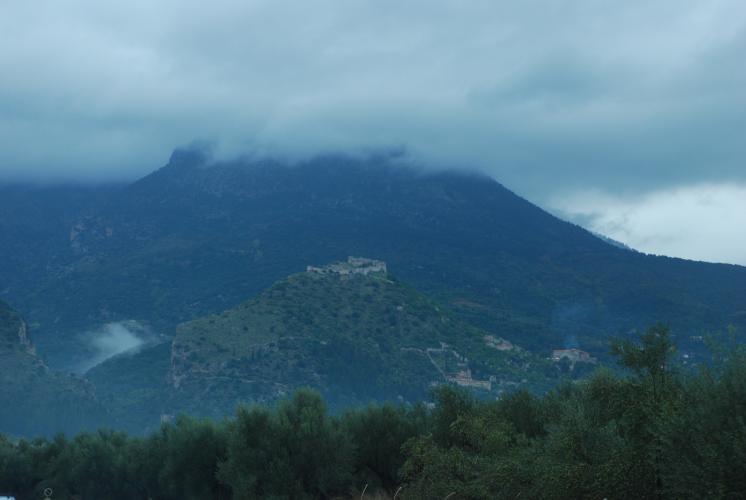> List of the cultural trail stations Thessaloniki - Mystras: "Constantine XI Palaiologos"
Thessaloniki
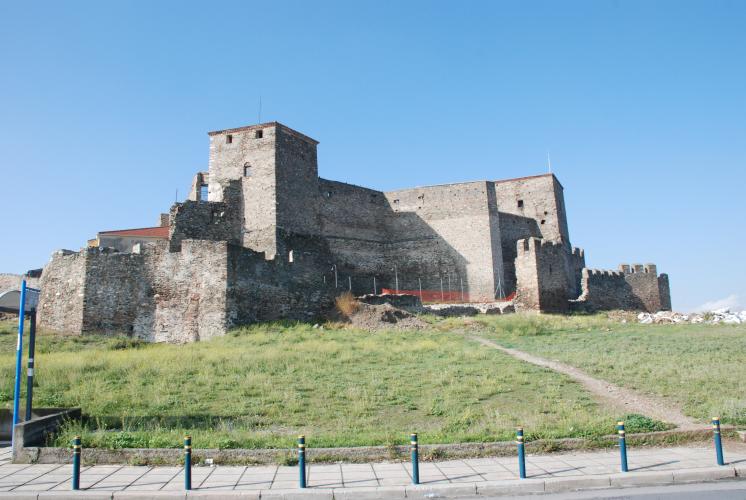
Platamonas
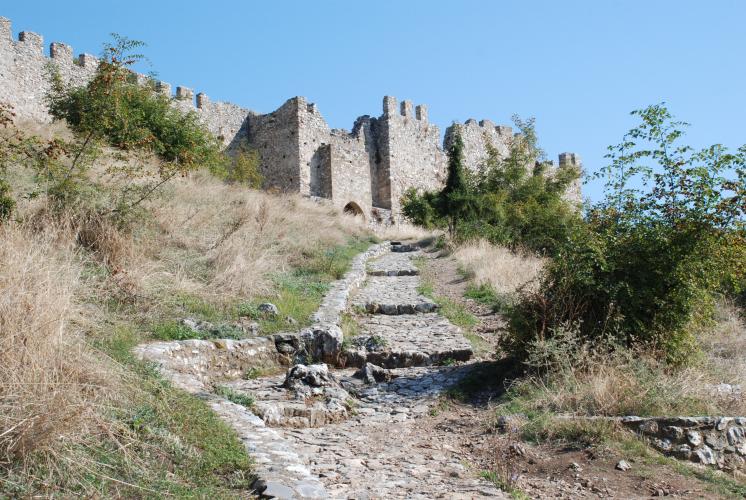
Meteora
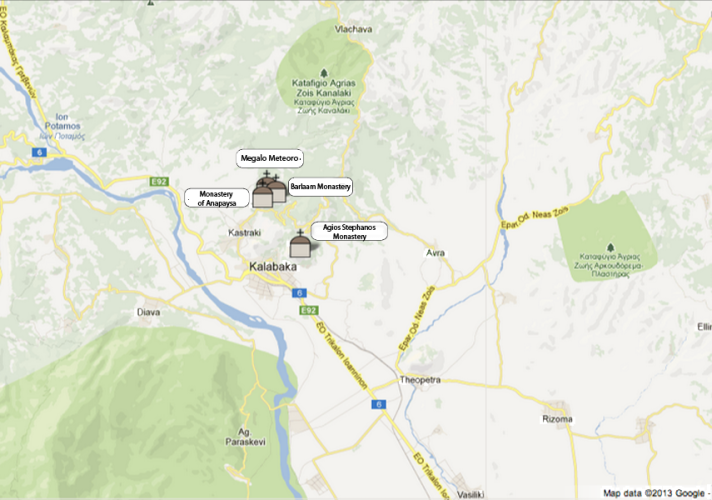 Located in the northwest of the Thessalian Plain, in the prefecture of Trikala, Meteora is a highly striking group of monuments. With their architecture, painted decoration and relics, the monasteries perfectly complement the complex and unique geological rock formations in the area, some of which exceed 400 metres in height.
Six major monasteries are open to visitors; other smaller abandoned, hermitages, countless wall paintings, hundreds of relics in the form of icons, manuscripts, books, silver liturgical vessels, holy vestments, articles of daily use and tributes all make Meteora the second largest monastic complex in Greece after Mount Athos. More
Located in the northwest of the Thessalian Plain, in the prefecture of Trikala, Meteora is a highly striking group of monuments. With their architecture, painted decoration and relics, the monasteries perfectly complement the complex and unique geological rock formations in the area, some of which exceed 400 metres in height.
Six major monasteries are open to visitors; other smaller abandoned, hermitages, countless wall paintings, hundreds of relics in the form of icons, manuscripts, books, silver liturgical vessels, holy vestments, articles of daily use and tributes all make Meteora the second largest monastic complex in Greece after Mount Athos. More
Athens
 In the 1st and 2nd century Athens was a wealthy city and one of the empire’s major intellectual centres, which frequently attracted the attention and patronage of emperors and wealthy civilians. Hadrian increased the perimeter of the walls and almost doubled the city’s area. Herod Atticus adorned it with groups of monuments that have survived in part to this day. That being said, serious damage was done when the one-time glorious city was taken by the Heruli in 267, and raided by the Goths under Alaric in 396. The Acropolis, the Roman agora and Hadrian’s Library were surrounded by a wall, which became Athens’ main fortification. Plato’s Academy was revitalized from the early 4th to the early 6th century by the neo-platonic philosophers, who taught rhetoric and philosophy to promising Christian and pagan youths from all over the empire; three of its students were Basil the Great, Gregory of Nazianzus and Emperor Julian. Empress Pulcheria was so impressed by the education received by Athinaïs, daughter of the sophist Leontius, that in 421 she had her forcibly christened Eudocia and wed her to her brother, Emperor Theodosius II. The so-called Palace of Giants, founded in the ancient agora in this period, may have belonged to Eudocia and her family. More
In the 1st and 2nd century Athens was a wealthy city and one of the empire’s major intellectual centres, which frequently attracted the attention and patronage of emperors and wealthy civilians. Hadrian increased the perimeter of the walls and almost doubled the city’s area. Herod Atticus adorned it with groups of monuments that have survived in part to this day. That being said, serious damage was done when the one-time glorious city was taken by the Heruli in 267, and raided by the Goths under Alaric in 396. The Acropolis, the Roman agora and Hadrian’s Library were surrounded by a wall, which became Athens’ main fortification. Plato’s Academy was revitalized from the early 4th to the early 6th century by the neo-platonic philosophers, who taught rhetoric and philosophy to promising Christian and pagan youths from all over the empire; three of its students were Basil the Great, Gregory of Nazianzus and Emperor Julian. Empress Pulcheria was so impressed by the education received by Athinaïs, daughter of the sophist Leontius, that in 421 she had her forcibly christened Eudocia and wed her to her brother, Emperor Theodosius II. The so-called Palace of Giants, founded in the ancient agora in this period, may have belonged to Eudocia and her family. More
Corinth

Nafplion
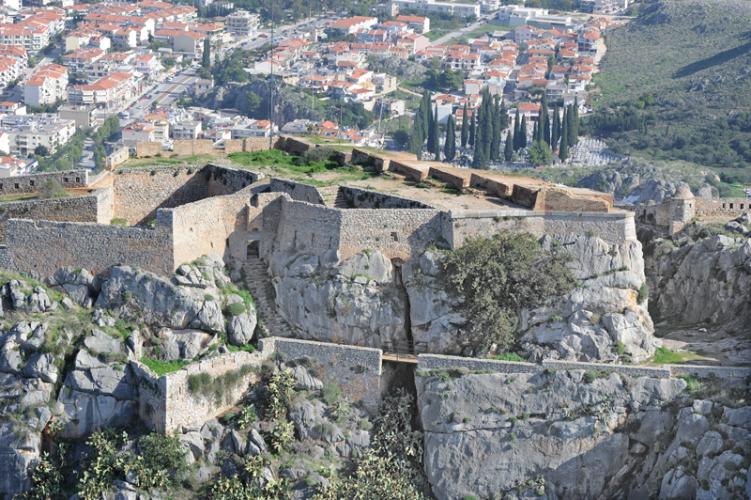 Legend has it that the city of Nafplio was founded by Nauplius, son of Poseidon and Amymone, daughter of King Danaus of Argos. His son was the hero Palamedes, who gave his name to the high rocky mound to the southeast. The city was founded on a small peninsula 85m high, 900m long and roughly 400m wide. In modern times it was named Akronafplia in replacement of its Turkish name (Iç Kale). It was accessible only from the north, via the neck of Arvanitia, a spit of land created by silting. From the start, the city served as the port of Argos and always lay in its shadow and under its influence. More
Legend has it that the city of Nafplio was founded by Nauplius, son of Poseidon and Amymone, daughter of King Danaus of Argos. His son was the hero Palamedes, who gave his name to the high rocky mound to the southeast. The city was founded on a small peninsula 85m high, 900m long and roughly 400m wide. In modern times it was named Akronafplia in replacement of its Turkish name (Iç Kale). It was accessible only from the north, via the neck of Arvanitia, a spit of land created by silting. From the start, the city served as the port of Argos and always lay in its shadow and under its influence. More
Monembasia
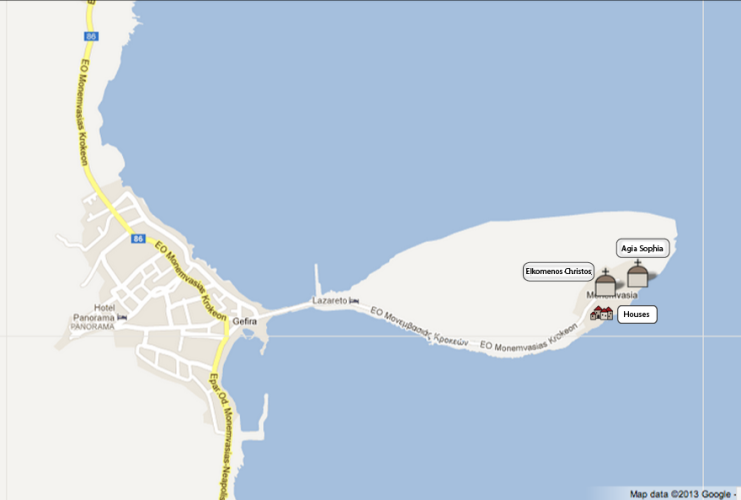 Urban development in the Upper and Lower City of Monemvasia was determined by the terrain and the area available for building.
Upper City houses typically stand two or three storeys tall, are larger than those in the Lower City and are built parallel to each other. Between them are pathways that may have replaced earlier cobbled roads. These houses belonged to the local aristocracy, to state and military officials, as well as to the city’s rulers. Only one of the buildings in the Upper City seems to have been public; it is an impressive structure measuring at least 25 x 25m - possibly the local commander’s headquarters - on the south-western side of the plateau. It has cisterns and vaulted spaces on two levels, an open plan wooden roofed triclinium on the upper floor and a balcony (solar) facing the sea. More
Urban development in the Upper and Lower City of Monemvasia was determined by the terrain and the area available for building.
Upper City houses typically stand two or three storeys tall, are larger than those in the Lower City and are built parallel to each other. Between them are pathways that may have replaced earlier cobbled roads. These houses belonged to the local aristocracy, to state and military officials, as well as to the city’s rulers. Only one of the buildings in the Upper City seems to have been public; it is an impressive structure measuring at least 25 x 25m - possibly the local commander’s headquarters - on the south-western side of the plateau. It has cisterns and vaulted spaces on two levels, an open plan wooden roofed triclinium on the upper floor and a balcony (solar) facing the sea. More
Mystras
